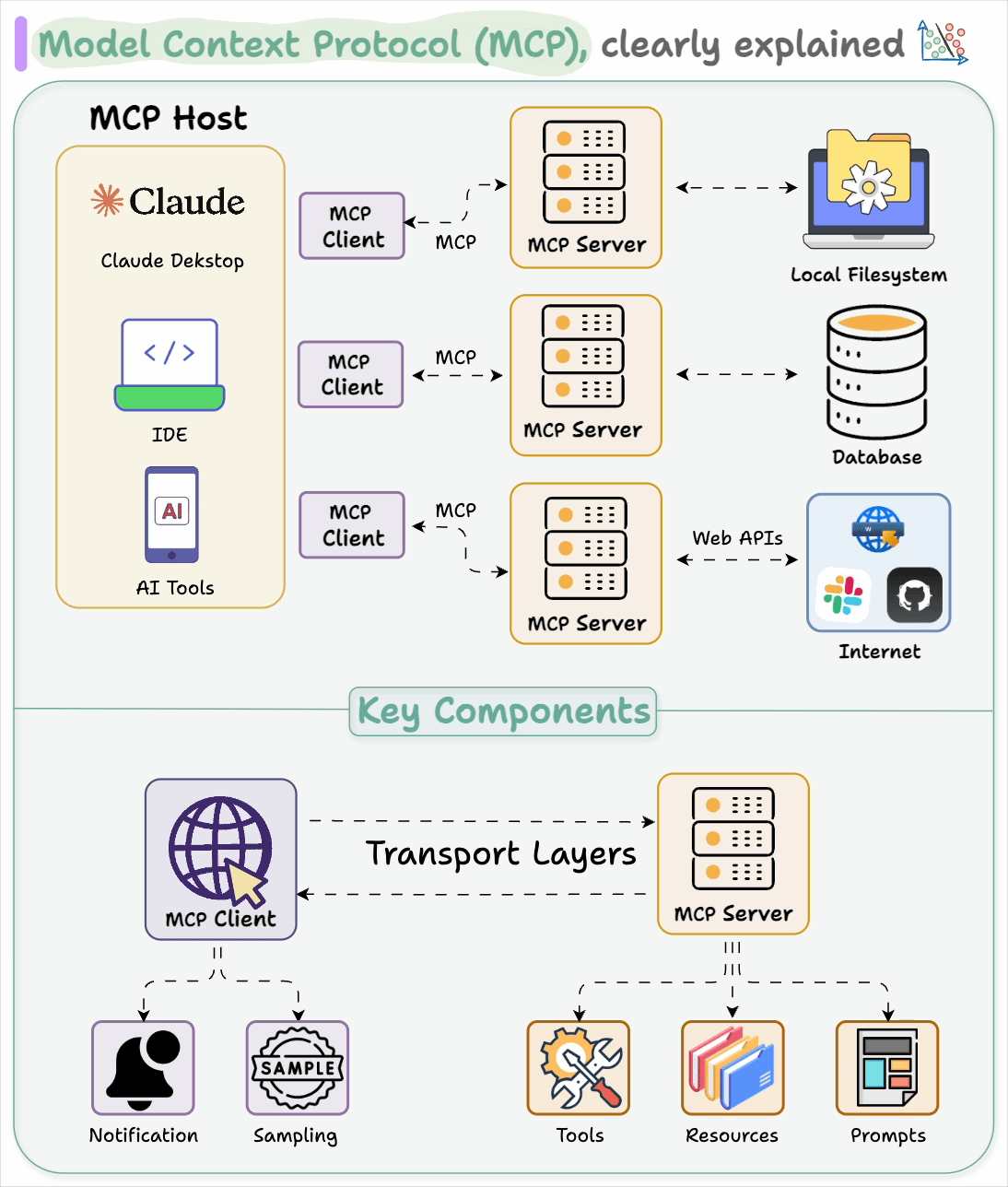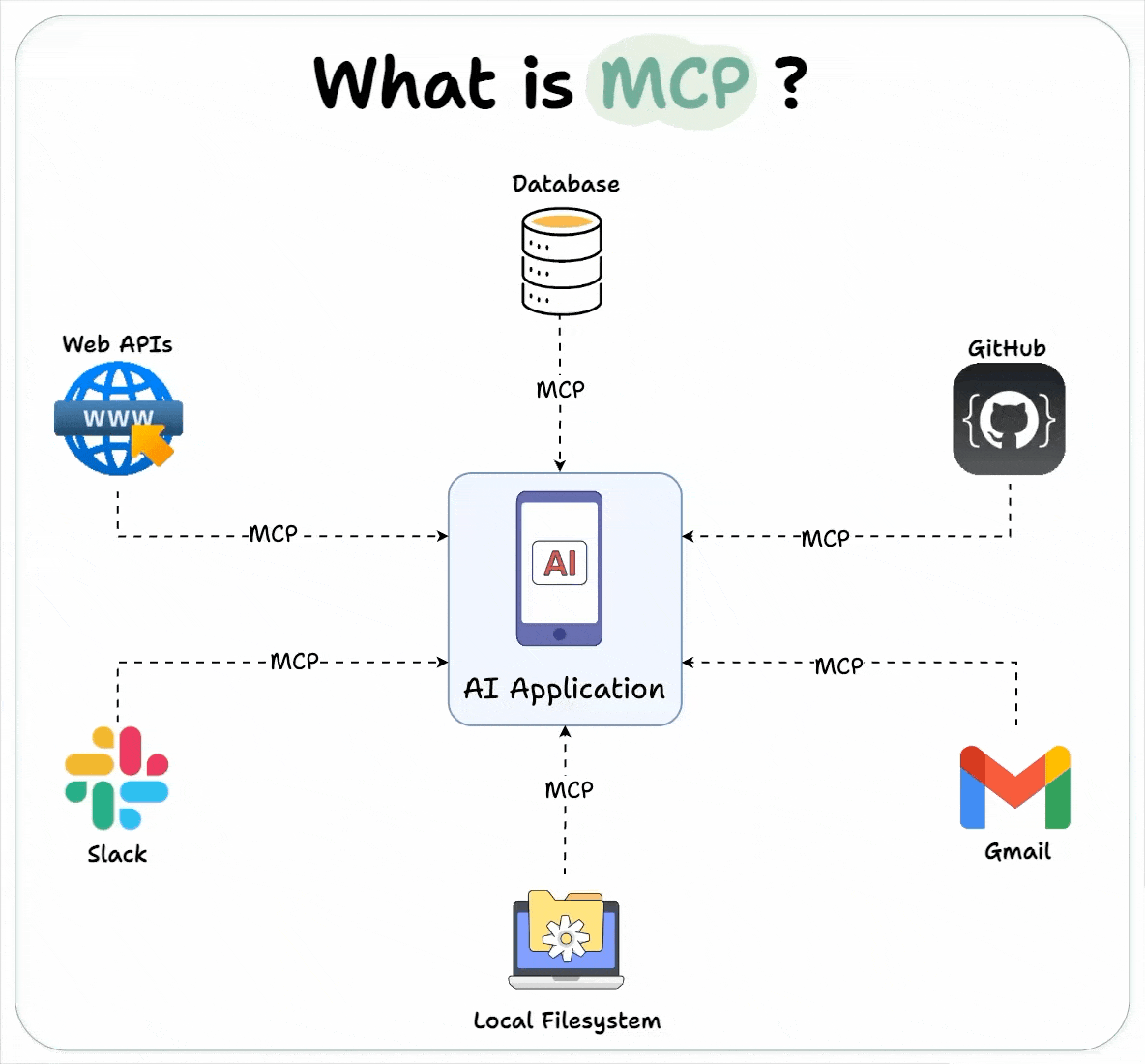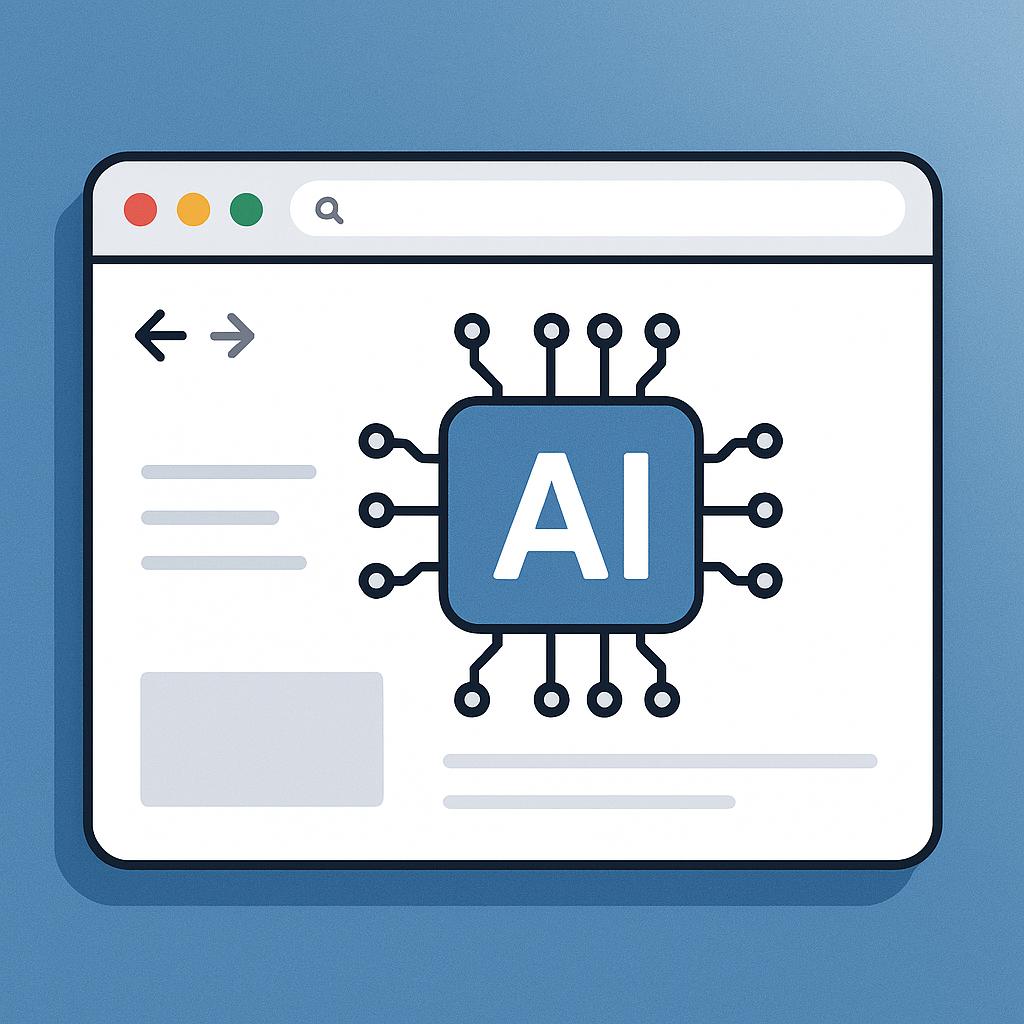
Overview of the Model Context Protocol
Definition of the Model Context Protocol
The Model Context Protocol (MCP) is a key framework that improves the integration of different models, making it easier for various systems to work together.textual information effectively. This protocol is essential for analyzing and contextualizing data from multiple sources, especially in smart cities, industrial IoT systems, and healthcare.
By establishing a standard way to share contextual data, the MCP allows systems to become more intelligent and responsive. Imagine a smart city where traffic lights change timing based on real-time vehicle counts, pedestrian activity, and weather conditions. The MCP ensures smooth data exchange and interpretation, allowing systems to respond effectively to changing conditions.
History and Development of the Protocol
The Model Context Protocol originated in the early 2000s when more professionals started to acknowledge the issues caused by fragmented systems. The rapid growth of the Internet of Things (IoT) created the need for a standardized method for devices to share and understand data together, driving the development of the MCP.
Significant milestones in the MCP’s development include:
- Early Frameworks (2005-2010): Initial discussions around context-aware computing laid the groundwork for the MCP. Researchers and industry experts began focusing on ways to enable devices to utilize contextual information effectively.
- Standardization Efforts (2011-2015): Organizations began to collaborate on defining standards and best practices to ensure cohesive implementation. Key figures in the field of computer science spearheaded efforts to create an open-source framework that developers could adopt.
- Adoption and Integration (2016-Present): As more industries recognized the potential of the MCP, its adoption increased across sectors such as urban planning, healthcare, and industrial settings. Educational institutions began incorporating the protocol into curricula, paving the way for future generations of technologists to leverage its capabilities.
This evolution shows that for systems to succeed in the digital age, they need to communicate effectively and intelligently. The ongoing development of the Model Context Protocol shows a dedication to innovation and collaboration that could influence the future of interconnected technologies.

Key Components of the Model Context Protocol
Role of Metadata in the Protocol
Metadata is crucial for improving the usability and effectiveness of the Model Context Protocol. Simply put, metadata is “data about data,” providing contextual information that describes and categorizes the underlying data structures.
For instance, if a smart building monitors temperature, humidity, and occupancy data, the metadata would include details like:
- Source of the Data: Indicating which sensors collected the data.
- Time Stamps: Recording when the data was generated.
- Units of Measurement: Clarifying whether temperature is in Fahrenheit or Celsius.
By incorporating metadata, the MCP allows systems to better understand the context surrounding the data and make informed decisions. Without this critical layer, information exchange can become ambiguous and unreliable, leading to inaccuracies and inefficiencies.
Use of Standards in Implementing the Protocol
Standardization is another cornerstone of the Model Context Protocol, as it enables diverse systems to communicate seamlessly. The adoption of established standards ensures that all parties understand how data should be formatted and transmitted. Popular standards include:
- JSON (JavaScript Object Notation): A lightweight data interchange format that is easy to read and write.
- XML (eXtensible Markup Language): Often used for data descriptions and complex data interactions.
By utilizing these standards, organizations can avoid the pitfalls of proprietary formats, which may cause compatibility issues down the line. Standardized protocols enable smoother interaction between smart devices from different manufacturers, improving system functionality.
Importance of Data Interoperability
Lastly, the success of the Model Context Protocol heavily relies on data interoperability. This concept involves different systems and applications working together seamlessly, sharing and utilizing data without obstacles.
Consider the healthcare sector, where patient data from various providers needs to be accessible across systems. With strong data interoperability guided by the MCP, healthcare professionals can:
- Easily share patient histories.
- Access real-time monitoring data from wearable devices.
- Collaborate more efficiently with other specialists.
This seamless communication fosters better patient outcomes and helps healthcare providers make data-driven decisions. Moreover, by prioritizing interoperability, organizations can future-proof their systems, ensuring that they remain adaptable to emerging technologies and innovations.
In essence, the Model Context Protocol’s key components—metadata, standardization, and data interoperability—offer a robust framework that enhances the effectiveness and intelligence of systems. As industries increasingly adopt these principles, we can anticipate a more connected and efficient future.
Applications of the Model Context Protocol
in Smart Cities and Urban Planning
As urbanization continues to rise, cities are increasingly adopting the Model Context Protocol to create smarter, more efficient environments. Picture a city where traffic lights change in real time based on traffic flow, pedestrians, and emergency vehicles.
The MCP enables this by:
- Integrating Data Sources: By merging data from cameras, sensors, and IoT devices, city planners can analyze patterns and make informed decisions.
- Enhancing Public Services: Services like waste collection and street lighting become optimized by adjusting to current demand and conditions.
A smart waste management system uses the MCP to monitor waste bin fill levels and schedule pickups. This data-driven approach reduces costs and increases the efficiency of municipal operations.
in Industrial Internet of Things (IIoT) Systems
The Model Context Protocol is crucial in Industrial IoT systems, coordinating interactions among machines, sensors, and enterprise applications. IIoT not only improves operational efficiency but also safety and sustainability in manufacturing.
Key benefits include:
- Real-Time Monitoring: The MCP continuously tracks machinery to predict failures in advance and prevent costly downtime.
- Data-Driven Decision Making: With contextual data at their fingertips, operators can analyze performance metrics and identify areas for efficiency improvements.
A manufacturing plant might use an IIoT solution with the MCP to monitor equipment health and track production. This level of insight leads to optimized resource allocation and enhanced overall productivity.
in Healthcare and Wearable Devices
In the healthcare sector, the adoption of the Model Context Protocol is revolutionizing patient care and management. Wearable devices like fitness trackers and medical monitors depend on the MCP to share important health data in real-time.
This is reflected in several ways:
- Holistic Patient Monitoring: Devices can send vital signs directly to healthcare providers, leading to timely interventions when needed.
- Personalized Health Insights: By leveraging contextual information, healthcare professionals can tailor treatments based on an individual’s health metrics and lifestyle.
A patient with a heart rate monitor can send their data to their healthcare provider through the MCP. If any abnormalities arise, the provider is alerted immediately, enabling prompt action.
As we can see, the Model Context Protocol bridges a variety of sectors, enhancing how data is collected, interpreted, and utilized. Embracing this protocol will enhance efficiency, improve resource management, and lead to a better quality of life for individuals and communities.

Challenges and Future Directions
Security and Privacy Concerns
As the Model Context Protocol becomes more popular, security and privacy issues are important challenges that need to be tackled. With the increase in data-sharing, the potential for breaches and misuse also escalates. If sensitive medical data from wearable devices is intercepted or accessed improperly, it could severely damage patient trust and compromise safety.
To prioritize security, organizations can:
- Implement Robust Encryption: Ensuring that data is encrypted both in transit and at rest can significantly reduce the risk of unauthorized access.
- Adopt Strict Access Controls: Limiting who can access sensitive data through multi-factor authentication provides another layer of protection.
While addressing these concerns is crucial, it’s equally important to educate users about privacy practices and the data being collected. This transparency fosters trust and mitigates fears surrounding data exposure.
Scalability Issues
Scalability presents another challenge as organizations strive to expand their use of the Model Context Protocol. As systems become more complex and the volume of data increases, ensuring seamless operation can be daunting.
Consider a city that integrates thousands of sensors to monitor traffic flow. If the underlying system can’t scale effectively, it may lead to:
- Data Overload: Systems can become overwhelmed, resulting in slow response times and inaccuracies.
- Interoperability Issues: As new devices are added, maintaining compatibility with existing protocols can be tricky.
To combat scalability issues, organizations can leverage cloud computing solutions, which offer flexible resources to manage fluctuations in data volume while also allowing for easier integration of new technologies.
Potential Enhancements and Innovations
Looking ahead, there are exciting opportunities for enhancing the Model Context Protocol. Innovations in artificial intelligence and machine learning could significantly elevate its capabilities by:
- Improving Data Analysis: Enhanced algorithms will be able to glean insights from complex datasets, paving the way for predictive analytics.
- Facilitating Real-Time Decision-Making: Integrating smarter systems allows for quicker, context-aware responses, optimizing processes in real-time.
Additionally, as the demand for decentralized systems grows, exploring blockchain technology for secure and distributed data management could pave the way for a more robust and trustworthy framework.
In summary, challenges such as security, scalability, and the need for constant innovation present opportunities for growth in the Model Context Protocol. By addressing these issues, organizations can unlock the full potential of this protocol, ensuring a more connected and efficient future.

Conclusion
Recap of the Protocol’s Significance
In revisiting the Model Context Protocol, it becomes evident that its significance cannot be overstated. By providing a standardized framework for data integration and communication, the MCP transforms how organizations understand and utilize contextual information. In today’s digital era, quickly interpreting data is essential for businesses to stay competitive.
The key components we discussed—metadata, standardization, and data interoperability—are fundamental pillars that support not just individual systems but entire ecosystems. It’s like building a house: without a solid foundation, every wall and roof would be at risk of collapsing. Similarly, without these crucial elements in place, the full potential of technological systems remains untapped.
Potential Impact on Various Industries
The potential for the Model Context Protocol to impact various industries is immense. As we’ve explored, its applications span from smart cities to industrial IoT systems and healthcare. Here’s a closer look at how these sectors stand to benefit:
- Smart Cities: Enhanced urban planning, real-time monitoring, and improved public services can lead to more livable, efficient environments.
- Industrial IoT: Increased operational efficiency, predictive maintenance, and reduced downtime elevate productivity across multiple manufacturing sectors.
- Healthcare: With real-time data sharing and personalized patient care, the MCP can improve outcomes and streamline healthcare management.
Additionally, the protocol’s adaptability opens doors for future innovations. As new technologies emerge, integrating them with the Model Context Protocol could lead to groundbreaking advancements.
The Model Context Protocol is crucial for linking different technologies and sectors, enhancing data processing and usage. Its role is pivotal not just in enhancing current operations but also in shaping the future landscape of interconnected systems. Industries adopting this protocol will encourage collaboration and create a smarter, more efficient world. The future is indeed bright, and the Model Context Protocol stands at the forefront of this transformation.
For More Information
Check out my AI-generated podcast on MCP here:




